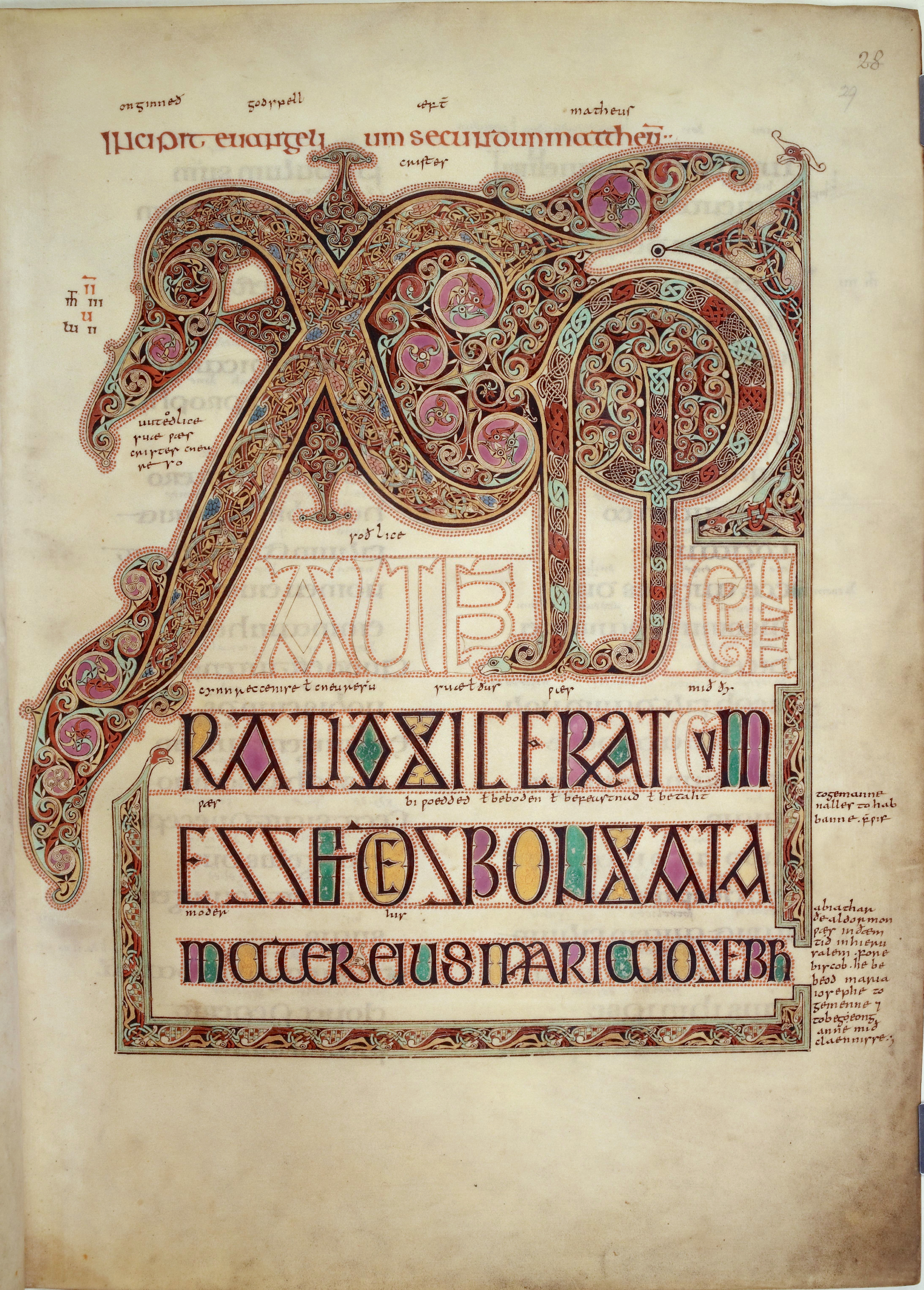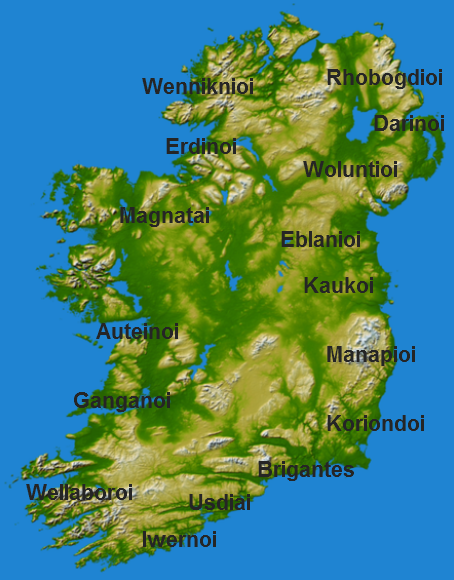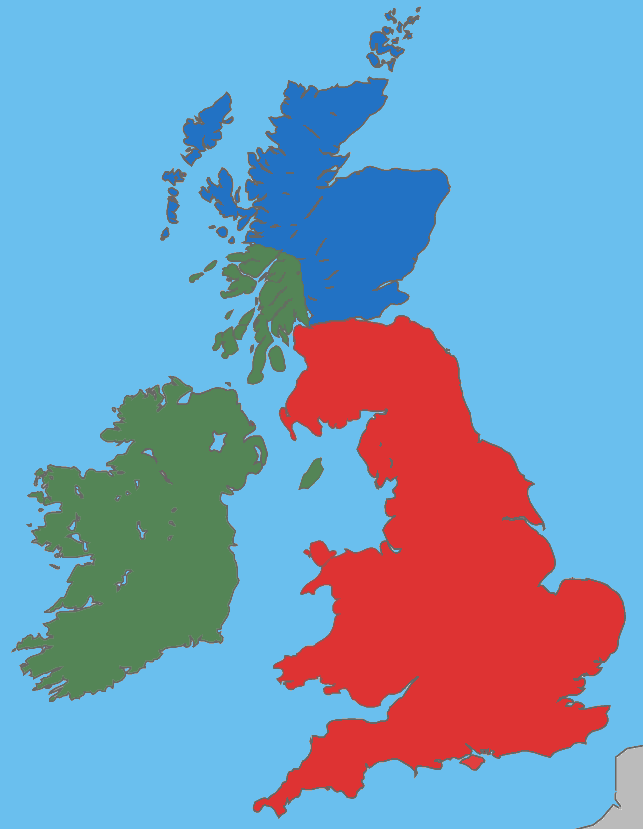|
Muiredach (ealdorman)
Muiredach (fl. 958–963) was an ealdorman ( la, dux) in northern England in the reign of Edgar the Peaceable. He is recorded in subscriptions to two royal charters. The first, Sawyer 679, is a grant by King Edgar to Oscytel, Archbishop of York of 10 hides at Hutton in Nottinghamshire, where he is named ''Mirdach dux'', ninth on the ealdorman list between ''Leod dux'' and ''Ascured dux''. His other appearance is in a newly discovered charter (found again 1983) issued by King Edgar to one Æthelferth, granting 5 hides at Ballidon in Derbyshire, where he is named ''Myrdah dux'' and appears eighth (last) in the ealdorman list, above ''Gunner dux''.Brooks, Gelling and Johnson, "New Charter", p. 141 His name precedes ''Oslac dominus'' ("Lord Oslac"), who is probably Oslac, future ealdorman of Northumbria. The names ''Mirdach'' and ''Myrdah'' represented the Goidelic name ''Muiredach'', and he is thus thought to be of Gaelic or Norse-Gaelic origin. He may have been one of the No ... [...More Info...] [...Related Items...] OR: [Wikipedia] [Google] [Baidu] |
Floruit
''Floruit'' (; abbreviated fl. or occasionally flor.; from Latin for "they flourished") denotes a date or period during which a person was known to have been alive or active. In English, the unabbreviated word may also be used as a noun indicating the time when someone flourished. Etymology and use la, flōruit is the third-person singular perfect active indicative of the Latin verb ', ' "to bloom, flower, or flourish", from the noun ', ', "flower". Broadly, the term is employed in reference to the peak of activity for a person or movement. More specifically, it often is used in genealogy and historical writing when a person's birth or death dates are unknown, but some other evidence exists that indicates when they were alive. For example, if there are wills attested by John Jones in 1204, and 1229, and a record of his marriage in 1197, a record concerning him might be written as "John Jones (fl. 1197–1229)". The term is often used in art history when dating the care ... [...More Info...] [...Related Items...] OR: [Wikipedia] [Google] [Baidu] |
Oslac Of York
Oslac ealdorman (or earl) of York from around 963 to 975. His territory included but may not have been limited to the southern half of Northumbria. His background is obscure because of poor source documentation. The latter has facilitated disagreement amongst historians regarding his family and ethnicity. He may have been the first ealdorman of southern—as opposed to a united—Northumbria, though an alternative tradition puts the division of Northumbria into two ealdormanries after his death. Little is known of his career as ealdorman, except for a legend that he escorted the Scottish king Kenneth II to the English royal court, and that he was expelled from England in 975. His life is unattested after this. He had one known son, but it is not clear if that son ever succeeded him. Origins Oslac's origins are unclear and no specific relationship with any previous known figure can be established from available sources. Oslac's name suggests to some historians that he was a N ... [...More Info...] [...Related Items...] OR: [Wikipedia] [Google] [Baidu] |
Anglo-Saxon Ealdormen
The Anglo-Saxons were a Cultural identity, cultural group who inhabited England in the Early Middle Ages. They traced their origins to settlers who came to Britain from mainland Europe in the 5th century. However, the ethnogenesis of the Anglo-Saxons happened within Britain, and the identity was not merely imported. Anglo-Saxon identity arose from interaction between incoming groups from several Germanic peoples, Germanic tribes, both amongst themselves, and with Celtic Britons, indigenous Britons. Many of the natives, over time, adopted Anglo-Saxon culture and language and were assimilated. The Anglo-Saxons established the concept, and the Kingdom of England, Kingdom, of England, and though the modern English language owes somewhat less than 26% of its words to their language, this includes the vast majority of words used in everyday speech. Historically, the Anglo-Saxon period denotes the period in Britain between about 450 and 1066, after Anglo-Saxon settlement of Britain, th ... [...More Info...] [...Related Items...] OR: [Wikipedia] [Google] [Baidu] |
Anglo-Saxon England (journal)
''Anglo-Saxon England'' is an annual peer-reviewed interdisciplinary academic journal covering the study of various aspects of history, language, and culture in Anglo-Saxon England. It has been published since 1972 by Cambridge University Press and is available in print and digital form. The first forty volumes of the journal included a bibliography porividng an overview of the past year's work in Anglo-Saxon studies; a cumulative bibliography is now available online, published by Cambridge University Press. The journal's motto, 'here one can still see their track', is drawn from King Alfred's Old English translation of ''Cura pastoralis''. Ever edition of the journal has, as its front cover, an image of the obverse of Alfred’s ‘London Monogram’ penny. Its current editors are Simon Keynes, Rosalind Love and Rory Naismith (all based at the University of Cambridge). Previous editors include Malcolm Godden, Peter A. Clemoes and Michael Lapidge Michael Lapidge, FBA (born 8 ... [...More Info...] [...Related Items...] OR: [Wikipedia] [Google] [Baidu] |
Northumbria
la, Regnum Northanhymbrorum , conventional_long_name = Kingdom of Northumbria , common_name = Northumbria , status = State , status_text = Unified Anglian kingdom (before 876)North: Anglian kingdom (after 876)South: Danish kingdom (876–914)South: Norwegian kingdom (after 914) , life_span = 654–954 , flag_type = Oswald's Stripes, the provincial flag of Northumbria and red was previously purple , image_coat = , image_map = Map_of_the_Kingdom_of_Northumbria_around_700_AD.svg , image_map_size = 250 , image_map_caption = Northumbria around 700 AD , image_map2 = , image_map2_size = , image_map2_caption = , government_type = Monarchy , year_start = 653 , year_end = 954 , event_end = South is annexed by Kingdom of England , event1 = South is annexed by the Danelaw , date_eve ... [...More Info...] [...Related Items...] OR: [Wikipedia] [Google] [Baidu] |
Gaels
The Gaels ( ; ga, Na Gaeil ; gd, Na Gàidheil ; gv, Ny Gaeil ) are an ethnolinguistic group native to Ireland, Scotland and the Isle of Man in the British Isles. They are associated with the Gaelic languages: a branch of the Celtic languages comprising Irish, Manx and Scottish Gaelic. Gaelic language and culture originated in Ireland, extending to Dál Riata in western Scotland. In antiquity, the Gaels traded with the Roman Empire and also raided Roman Britain. In the Middle Ages, Gaelic culture became dominant throughout the rest of Scotland and the Isle of Man. There was also some Gaelic settlement in Wales, as well as cultural influence through Celtic Christianity. In the Viking Age, small numbers of Vikings raided and settled in Gaelic lands, becoming the Norse-Gaels. In the 9th century, Dál Riata and Pictland merged to form the Gaelic Kingdom of Alba. Meanwhile, Gaelic Ireland was made up of several kingdoms, with a High King often claiming lordsh ... [...More Info...] [...Related Items...] OR: [Wikipedia] [Google] [Baidu] |
Goidelic
The Goidelic or Gaelic languages ( ga, teangacha Gaelacha; gd, cànanan Goidhealach; gv, çhengaghyn Gaelgagh) form one of the two groups of Insular Celtic languages, the other being the Brittonic languages. Goidelic languages historically formed a dialect continuum stretching from Ireland through the Isle of Man to Scotland. There are three modern Goidelic languages: Irish ('), Scottish Gaelic ('), and Manx ('). Manx died out as a first language in the 20th century but has since been revived to some degree. Nomenclature ''Gaelic'', by itself, is sometimes used to refer to Scottish Gaelic, especially in Scotland, and so it is ambiguous. Irish and Manx are sometimes referred to as Irish Gaelic and Manx Gaelic (as they are Goidelic or Gaelic languages), but the use of the word "Gaelic" is unnecessary because the terms Irish and Manx, when used to denote languages, always refer to those languages. This is in contrast to Scottish Gaelic, for which "Gaelic" distinguishes the l ... [...More Info...] [...Related Items...] OR: [Wikipedia] [Google] [Baidu] |
Ealdorman Of Northumbria
Earl of Northumbria or Ealdorman of Northumbria was a title in the late Anglo-Saxon, Anglo-Scandinavian and early Anglo-Norman period in England. The ealdordom was a successor of the Norse Kingdom of York. In the seventh century, the Anglo-Saxon kingdoms of Bernicia and Deira were united in the kingdom of Northumbria, but this was destroyed by the Vikings in 867. Southern Northumbria, the former Deira, then became the Viking kingdom of York, while the rulers of Bamburgh commanded territory roughly equivalent to the northern kingdom of Bernicia. In 1006 Uhtred the Bold, ruler of Bamburgh, by command of Æthelred the Unready became ealdorman in the south, temporarily re-uniting much of the area of Northumbria into a single jurisdiction. Uhtred was murdered in 1016, and Cnut then appointed Eric of Hlathir ealdorman at York, but Uhtred's dynasty held onto Bamburgh. After the Norman Conquest the region was divided into multiple smaller baronies, one of which was the earldom of North ... [...More Info...] [...Related Items...] OR: [Wikipedia] [Google] [Baidu] |
Derbyshire
Derbyshire ( ) is a ceremonial county in the East Midlands, England. It includes much of the Peak District National Park, the southern end of the Pennine range of hills and part of the National Forest. It borders Greater Manchester to the north-west, West Yorkshire to the north, South Yorkshire to the north-east, Nottinghamshire to the east, Leicestershire to the south-east, Staffordshire to the west and south-west and Cheshire to the west. Kinder Scout, at , is the highest point and Trent Meadows, where the River Trent leaves Derbyshire, the lowest at . The north–south River Derwent is the longest river at . In 2003, the Ordnance Survey named Church Flatts Farm at Coton in the Elms, near Swadlincote, as Britain's furthest point from the sea. Derby is a unitary authority area, but remains part of the ceremonial county. The county was a lot larger than its present coverage, it once extended to the boundaries of the City of Sheffield district in South Yorkshire ... [...More Info...] [...Related Items...] OR: [Wikipedia] [Google] [Baidu] |
Ealdorman
Ealdorman (, ) was a term in Anglo-Saxon England which originally applied to a man of high status, including some of royal birth, whose authority was independent of the king. It evolved in meaning and in the eighth century was sometimes applied to the former kings of territories which had submitted to great powers such as Mercia. In Wessex in the second half of the ninth century it meant the leaders of individual shires appointed by the king. By the tenth century ealdormen had become the local representatives of the West Saxon king of England. Ealdormen would lead in battle, preside over courts and levy taxation. Ealdormanries were the most prestigious royal appointments, the possession of noble families and semi-independent rulers. Their territories became large, often covering former kingdoms such as Mercia or East Anglia. Southern ealdormen often attended court, reflecting increasing centralisation of the kingdom, but the loyalty of northern ealdormen was more uncertain. In ... [...More Info...] [...Related Items...] OR: [Wikipedia] [Google] [Baidu] |
Ballidon
Ballidon is a village and civil parish in the Derbyshire Dales district of Derbyshire, England, on the edge of the Peak District National Park. According to the 2001 census it had a population of 79. The population at the 2011 Census remained less than 100. Details are maintained in the civil Parish of Aldwark, Derbyshire. Ballidon was listed in the Domesday Book of 1086 and was a much larger village than seen today. That area now devastated by the Tilcon Quarry was a deep valley and the site of an ambush of troops of the Jacobite rising of 1745; skulls and weaponry were recovered on the west bank of the stream. Ballidon sits at the foot of Ballidon Dale, which is a Site of Special Scientific Interest (SSSI). At the head of the dale is Roystone Grange where there are remains of monuments from the Bronze Age, a Romano-British settlement and a medieval monastic grange. The Limestone Way The Limestone Way is a waymarked long-distance footpath in Derbyshire, England. It runs ... [...More Info...] [...Related Items...] OR: [Wikipedia] [Google] [Baidu] |




.jpg)